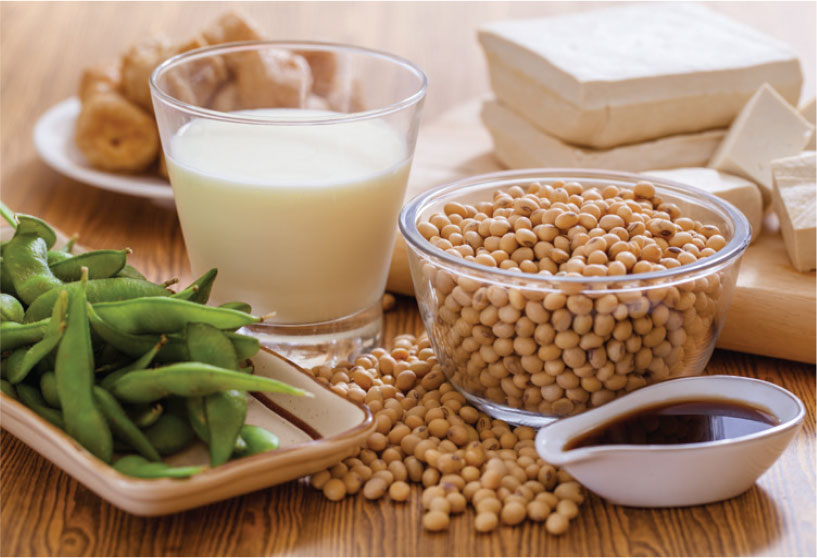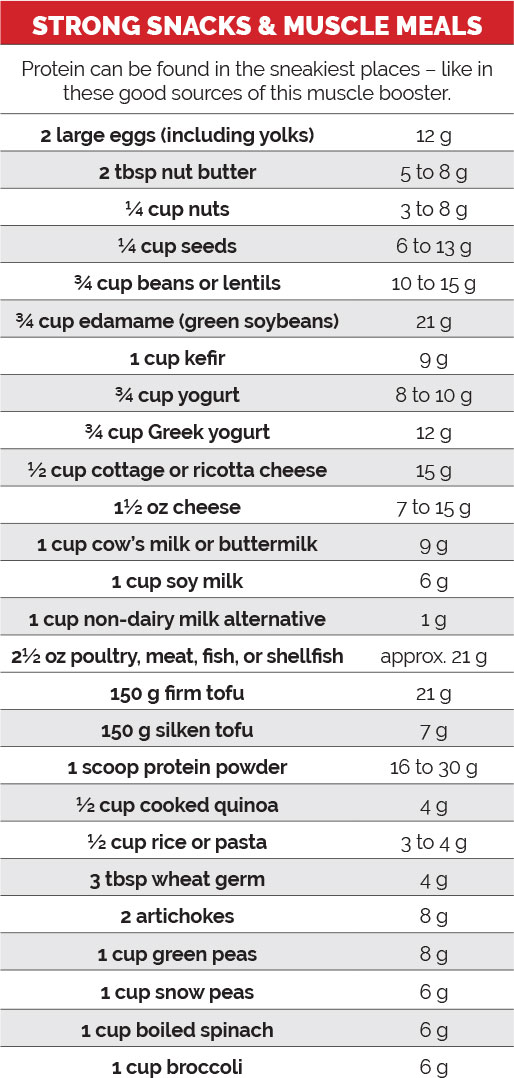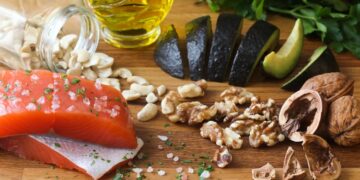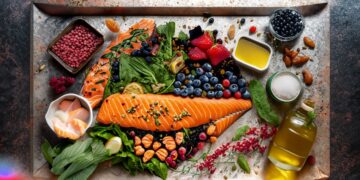THE QUALITY OF YOUR DIET SHOULD COMPLIMENT YOUR WORKOUTS, AND KNOWING THE BEST WHOLE FOOD SOURCES OF PROTEIN, THE MUSCLE-BUILDING MACRO, IS IMPERATIVE FOR THIS GOAL. DIG IN SO YOU CAN GET STRONG AND TRIM – AND STAY THAT WAY.
With so much nutrition and physical activity information streaming your newsfeed each day, it can be difficult to pick out which information pertains to you and what is the result of a plethora of marketing tactics. Now, more so than ever, it is important to get the right facts to ensure that you and your health aren’t being compromised – especially when it comes to the hard-earned muscle that you’ve been working so very hard to build
Research has confirmed that humans naturally lose muscle mass (a state known as sarcopenia) at a rate of three to eight per cent each decade. In women, this muscle mass decrease is coupled with a shift in hormones, resulting in changing fat mass distribution and storage, and a slowing metabolism. It can be very frustrating for women as they try to maintain their health – especially those trying to lose weight by cutting out certain foods, food groups, or macronutrients with little success – to determine what is truly going on and how to counteract these changes in their body’s physiology.
A NEW FOCUS
Healthy, balanced eating habits and physical activity go hand in hand. You may spend your twenties and thirties an avid runner, making food choices that you are happy with but that you don’t really pay much attention to. But when you continue your running routine into your mid-to-late thirties and forties, you may notice that you aren’t able to maintain the physique you once had. You find yourself asking “What’s going on?”
Cardiovascular exercises (like jogging, cycling, rowing, and aerobics) are great because they help improve blood sugar levels, promote heart health, and help maintain optimal blood pressure. But at this time in your life, as your body starts to slowly lose muscle mass, it becomes critical that you ensure strength and resistance exercises are included in your fitness regimen. And that’s not the only thing that has to change – keeping up with your protein intake throughout the day will keep your metabolism in prime working capacity. But just how much protein do you need to maintain – and to continue to build – the muscle mass you want for health and aesthetics?

PROTEIN POWER
An intake of 0.8 to 1.5 grams of protein per kilogram of body weight, or 10 to 30 per cent of your daily caloric intake, is a range recommended for general health and one that supports the most individuals. However, as we age and muscle mass shifts, it becomes important to consume more protein – toward the upper end of the range – to promote muscle growth, which in turn will help promote a stronger metabolic rate. And if you practise weekly resistance training, your protein needs will be higher to keep up with the demand of muscle protein synthesis. According to a recent review in the American Journal of Clinical Nutrition, consuming an equal amount of protein at each meal (rather than the bulk at dinner, when individuals tend to consume most of their protein) could delay the onset of sarcopenia amongst adults in the 40- to 60-year age range
Another study looked at the daily protein intakes of subjects with different strength abilities and found that those who consumed protein evenly throughout the day fell into the “nonfrail” category, whereas those who consumed most of their protein in their midday meal fell into the “pre-frail” or “frail” category. These results supported the hypothesis that a balanced ingestion of protein at each meal is best. Keep in mind that while 25 to 30 grams of
protein at breakfast, lunch, and dinner seems to help maintain muscle mass, this prescription requires further clinical exploration

FROM THE EARTH
Becoming familiar with foods rich in high-quality protein and their respective amounts is an important first step to forming a diet that adequately supports your efforts in the gym – especially breakfast foods, the most common meal in which we under-consume protein. Though you likely think of meats and animal byproducts when you think of the word “protein,” it is important to recognize vegetarian sources of protein (such as nuts and seeds, beans, soy, grains, and vegetables), as they also provide some protein toward your daily intake. Before you choose a vegetarian source of protein, you need to consider a few things that will have an impact on optimal muscle synthesis and your daily iron intake:
QUALITY: Certain amino acids (the building blocks of protein) are not made by our bodies – we need to ingest them through food sources. Animal sources contain a complete amino acid profile, meaning they have all the amino acids our bodies need to use the protein. However, many vegetarian sources do not. In most cases, pairing a vegetable protein source, like beans, with a source of carbs, like rice or pasta, can help complete your meal’s amino acid profile
AMOUNT: Animal-based proteins have better absorption rates – for the most part, your body can use their proteins easily. You need to consume up to double the amount of vegetarian protein to ensure your body receives the recommended amounts, since they aren’t as easily absorbed by your body
TYPE AND AMOUNT: Vegetarian sources of protein contain a form of iron called non-heme iron that is not as well-absorbed as animal sources of protein, which contain heme iron. Combining vegetarian protein with a food source of vitamin C (like tomatoes, bell peppers, broccoli, oranges, strawberries, kiwi, or melon) helps maximize iron absorption. It is also important to keep foods with caffeine (such as coffee, chocolate, and tea) or dairy (cheese, milk, and yogurt, for example) separate from your veggie protein intake, as they inhibit iron absorption.
The link between protein intake and sarcopenia is a well-researched area within the world of general and sport nutrition. Since the results of studies may become skewed as they make their way to the consumer, it is important to dive past the headlines and into the research prior to making changes to your daily habits – and implementing the tips included here is a great place for you to start.
















